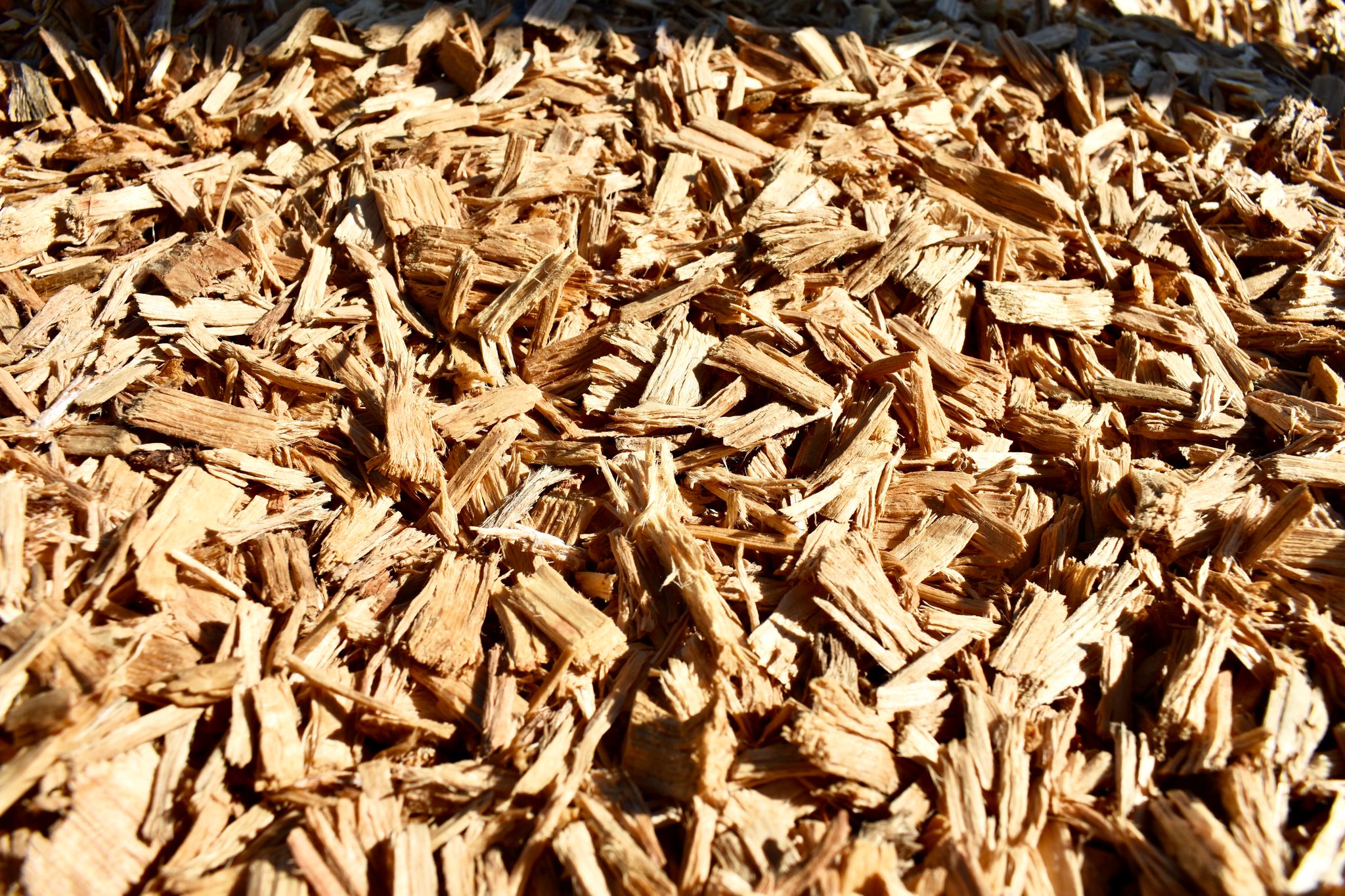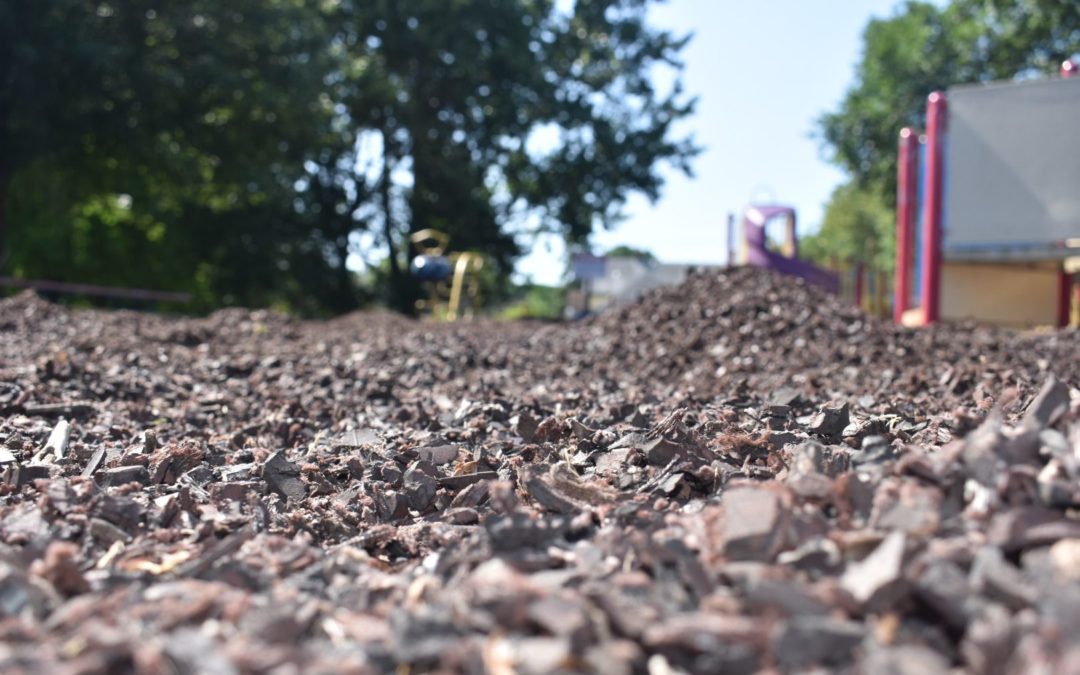What is rubber mulch for playgrounds?
Rubber mulch is a type of loose-fill playground surfacing material. It is bits or chips of shredded rubber made from recycled tires and some virgin rubber sources.
Rubber mulch can go by many names:
- Loose-fill rubber
- Crumb rubber
- Rubber chips
Recently, there’s been a growing discussion if rubber mulch is safe or a good surfacing for playgrounds. Below we cover rubber mulch for playgrounds pros and cons and our final verdict and recommendations.
For additional information on what is best for your playground, please reach out to our experts.
Rubber Mulch Pros
1. Rubber Mulch Lifespan Is Very Long
Since rubber mulch is made from rubber tires, it’s not susceptible to deterioration compared to natural materials like wood mulch. It can hold up to harsh weather conditions and high traffic without significant signs of wear and tear, causing rubber mulch’s lifespan to be much longer than other materials.
2. High Impact Ratings
With more than 200,000 children ages 14 and younger needing emergency care for playground-related injuries, safety is a major concern for school districts and parks. Rubber mulch has been tested to have a high head impact rating, meaning it reduces the risk of serious or life-threatening head injuries caused by playground falls.
3. Requires Less Volume
To meet the safety standard for loose-fill rubber, rubber mulch typically only needs 6-inches of material. Compared to other wood mulch or engineered wood fiber surfacing, that’s about half of the material necessary to meet safety requirements.
Rubber Mulch Cons
1. Investigation If Crumb Rubber and Cancer are Linked
In the last decade, concern about crumb rubber possibly causing cancer in soccer players was brought to the public’s attention. Since artificial turf is made from the same rubber crumb material as playground rubber mulch, the concern extended to the safety of children and students using playgrounds with rubber mulch surfacing.
In 2016, the CDC, EPA, and CPSC researched “the potential health risks from playing on synthetic turf fields in the U.S. containing tire crumb rubber.” According to the EPA, “studies to date have not shown an elevated health risk from playing on fields with tire crumb rubber, but the existing studies have been limited.” However, the reports confirmed that chemicals were present in tire crumb rubber.
With the rise of awareness around present chemicals and possible health concerns, many school districts across the U.S. removed rubber crumb surfacing in their playgrounds and replaced it with more natural materials.
In 2017, “the Duluth School board motioned to remove all rubber mulch chips on school playgrounds, and replace the potentially harmful material.” The Duluth public schools in Minnesota replaced the rubber mulch with engineered wood fiber surfacing.
2. Increased Maintenance Time
As with all loose-fill surfacing material, the rubber chips get scattered outside the play area. The material inevitably ends up around your park or school’s play area from traffic and weather.
When rubber mulch is scattered, it becomes embedded into the soil and doesn’t break down. The difference between rubber mulch and wood mulch is the wood chips will naturally break down into the ground while the rubber mulch remains embedded.
Ultimately, the maintenance crew must manually remove the scattered chips.
3. Much More Expensive Playground Surfacing
Rubber mulch is significantly more expensive than other loose-fill surfacing types, such as wood mulch or engineered wood fiber (EWF). Comparing the cubic yard of EWF to rubber mulch, EWF costs a fraction of the amount.
In addition, since rubber mulch is a much heavier material, transportation and delivery costs are multiplied. For example, a truckload of our Nature’sPlus EWF carries twice as much volume as a truckload of rubber mulch resulting in heightened labor and gas costs.
Furthermore, since rubber mulch is made from shredded tires, it requires a specific disposal process, leading to more costs.
The Verdict on Rubber Mulch for Playgrounds
Is rubber mulch safe?
Overall, rubber mulch’s safety cons outweigh the pros. With the confirmed presence of chemicals found in rubber crumb and studies questioning if it causes cancer, there are other clean and natural playground surfacing alternatives we recommend using.
Is rubber mulch good for playgrounds?
While rubber mulch has multiple benefits, including a long lifespan, reduces the risk of life-threatening falls, and requires less volume, it’s not the best surfacing option for playgrounds. Rubber mulch has been linked to possible health concerns from the presence of toxins, needs extra playground maintenance, and is an expensive material.
Is rubber mulch worth the price?
Rubber mulch is a significantly more expensive playground surfacing material than wood mulch or engineered wood fiber. And it comes with other compounding costs, including delivery, labor, and disposing requirements. In conclusion, we recommend investing in other long-lasting, safe surfacing alternatives, such as Nature’sPlus engineered wood fiber.

Our Recommended Playground Surfacing: Nature’sPlus EWF
Nature’sPlus engineered wood fiber is made from 100% Tamarack tree for an all-natural playground surfacing. Uniquely, the Tamarack tree is naturally resistant to mold and decay. While crumb rubber has a long lifespan because it’s made from tires, Nature’sPlus EWF uses natural material to provide a resilient, durable playground surfacing.
The pros of Nature’sPlus engineered wood fiber:
- Made from locally sourced Tamarack trees
- All-natural material without toxins or chemicals
- Naturally resistant to mold and decay
- ASTM 1292 certified to reduce the risks of playground falls

